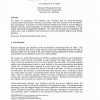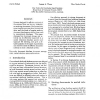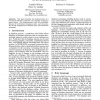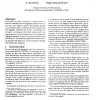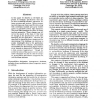ICDE
1987
IEEE
14 years 3 months ago
1987
IEEE
Handling parallelism in database systems involves the specification of a storage model, a placement strategy, and a query processing strategy. An important goal is to determine th...
ER
1987
Springer
14 years 3 months ago
1987
Springer
We report on experience with database user interfaces that are entity-relationship oriented, rather than relation-oriented, and provide a new level of ease-of-use for information ...
DBPL
1987
Springer
14 years 3 months ago
1987
Springer
This paper investigates a method to represent database objects as typed expressions in programming languages. A simple typed language supporting non-flat records, higher-order rel...
DBPL
1987
Springer
14 years 3 months ago
1987
Springer
VLDB
1991
ACM
14 years 3 months ago
1991
ACM
Systems designed for efficient retrieval of conventional data can be very inefficient at retrieving documents. Documents have more complex structure than conventional data, and th...
VLDB
1991
ACM
14 years 3 months ago
1991
ACM
This paper describes the implementation of a set-oriented database production rule language proposed in earlier papers. Our implementation uses the extensibility features of the St...
VLDB
1991
ACM
14 years 3 months ago
1991
ACM
Recent work on parallel joins and data skew has concentrated on algorithm design without considering the causes and chara.cteristics of data. skew itself. Existming ana.lyt,ic mod...
VLDB
1991
ACM
14 years 3 months ago
1991
ACM
In this paper we present a technique to optimize queries on deductive databases that use aggregate operations such as min, max, and “largest Ic values.” Our approach is based ...
VLDB
1991
ACM
14 years 3 months ago
1991
ACM
Queries in object-oriented datab;Lqcs are formulated against a class and retrieve instnnccls of the class sat,isfying a certain predicate on the att,riblltes of the class. The pre...
VLDB
1991
ACM
14 years 3 months ago
1991
ACM
In this paper we describe a rule-based approach to semantic specification that can be used to establish semantic agreement between a source and receiver. Query processing techniqu...

